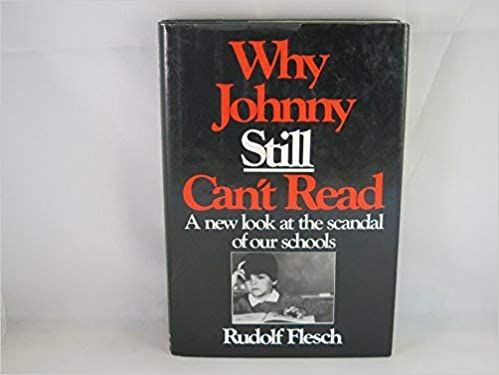
Why Johnny Still Can’t Read: A New Look at the Scandals of Our Schools
Now that Rudolf Flesch has made the argument that phonics is the most effective way to teach children how to read in his last book, Why Johnny Can’t Read – And What You Can Do About It, this second book further examines the role of phonics in the education system. Thirty years after publishing Why Johnny Can’t Read – And What You Can Do About It, acknowledges how over time the progressive agenda that has been indoctrinated into school faculty has forsaken much of the teaching method of phonics. Instead, teachers now promote a look-and-say method of teaching children to read which uses only a small part of the phonics method of teaching.
Flesch believes this unsound approach to teaching children to read is meant to be detrimental, since it can have a domino effect onto the child’s other studies, and prevent them from reaching their full potential. Knowledge is power, and as years go by, more of our children are being stripped of this power. This book shows parents how to be their child’s best advocate, and see through the education system’s agenda to bypass necessary and extremely important steps in their child’s learning.
About the Author
Rudolf Flesch is an Austrian-born American author, readability expert and writing consultant. He was a major advocate for plain English and the use of phonics rather than sight reading to teach children in the United States. He created the Flesch Reading Ease tests, and was co-creator of the Flesch-Kincaid readability tests.
Flesch is probably known best for Why Johnny Can’t Read: And What You Can Do About It. His other books include How to Test Readability (1951), How to Write Better (1951), The Art of Clear Thinking (1951), The ABC of Style: A Guide to Plain English (1964), and How to Write Plain English: A Book for Lawyers and Consumers.
children, Department of Education, education, Mental Health, phonics

